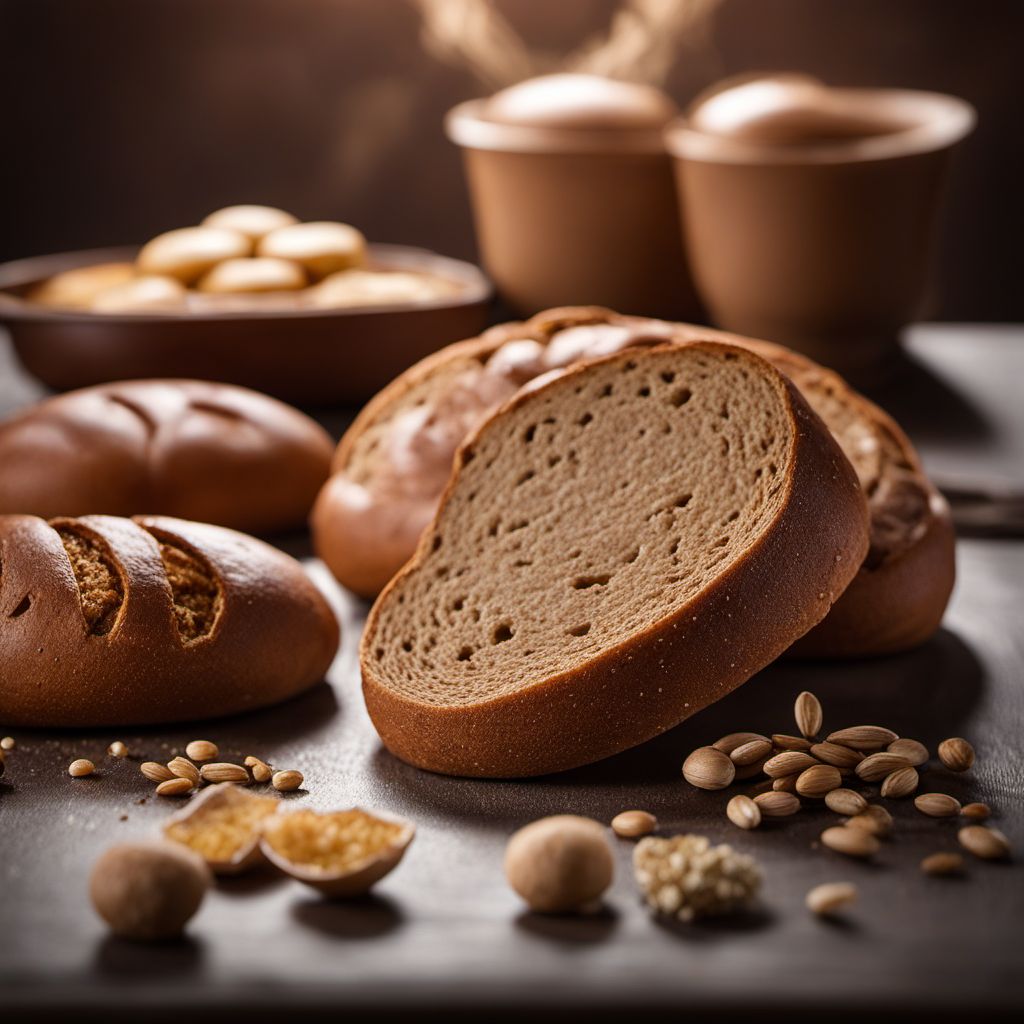
Ingredient
Rye bread and rolls, refined flour
The Wholesome Grain Delicacy
Rye bread and rolls, made with refined flour, are a wholesome grain delicacy that offers a unique nutty flavor and dense texture. With their rich history and cultural significance, rye bread and rolls have been enjoyed for centuries in various cuisines around the world.
Origins and history
Rye bread has been a staple in Northern and Eastern European countries for centuries, where rye crops thrived in colder climates. It was a reliable source of sustenance and often associated with traditional baking methods. Rye bread and rolls made with refined flour have a lighter texture compared to their whole grain counterparts, making them a versatile choice for sandwiches, toasts, or accompaniments to hearty meals.
Nutritional information
Rye bread and rolls made with refined flour provide a good source of dietary fiber, vitamins, and minerals. They are lower in gluten compared to wheat bread, which may be beneficial for individuals with gluten sensitivities. A standard slice of rye bread contains approximately 80 calories.
Allergens
May contain allergens such as gluten or wheat.
How to select
When selecting rye bread or rolls, look for loaves or rolls that have a firm crust and a moist, chewy interior. Avoid any signs of dryness or staleness. Opt for products made with high-quality ingredients and minimal additives. Additionally, consider choosing organic or artisanal options for a more authentic and flavorful experience.
Storage recommendations
To maintain freshness, store rye bread and rolls in a cool, dry place, such as a bread box or pantry. Avoid storing them in the refrigerator, as it can accelerate staling. If necessary, wrap them tightly in plastic wrap or place them in an airtight container to prevent moisture loss.
How to produce
Rye can be grown in temperate regions with well-drained soil. It requires moderate watering and can tolerate colder climates. Rye can be sown directly in the ground or in containers. Harvest the grains when they are fully mature and dry. Thresh and winnow the grains to remove the chaff before grinding them into flour.
Preparation tips
Rye bread and rolls can be enjoyed in various ways. They are commonly used for sandwiches, toasts, or open-faced smørrebrød in Scandinavian cuisine. Rye bread can also be used as a base for bruschetta or served alongside soups and stews. Additionally, rye flour can be used in baking, adding a distinct flavor and texture to bread, muffins, or pancakes.
Substitutions
Whole wheat bread or pumpernickel bread can be used as substitutes for rye bread and rolls, although they will have slightly different flavors and textures. If a gluten-free option is needed, gluten-free bread made with alternative flours such as rice or almond flour can be used.
Culinary uses
Rye bread and rolls made with refined flour are commonly used in Scandinavian cuisine, where they are enjoyed with various toppings such as smoked salmon, pickled herring, or cheese. They are also popular in Eastern European cuisines, where they are used for traditional dishes like Russian black bread or Lithuanian rye rolls. In German cuisine, rye bread is a staple and often served with cold cuts or sausages.
Availability
Rye bread and rolls made with refined flour are commonly available in Northern and Eastern European countries, such as Sweden, Denmark, Germany, and Russia. They can also be found in specialty bakeries or international food stores in other regions.

